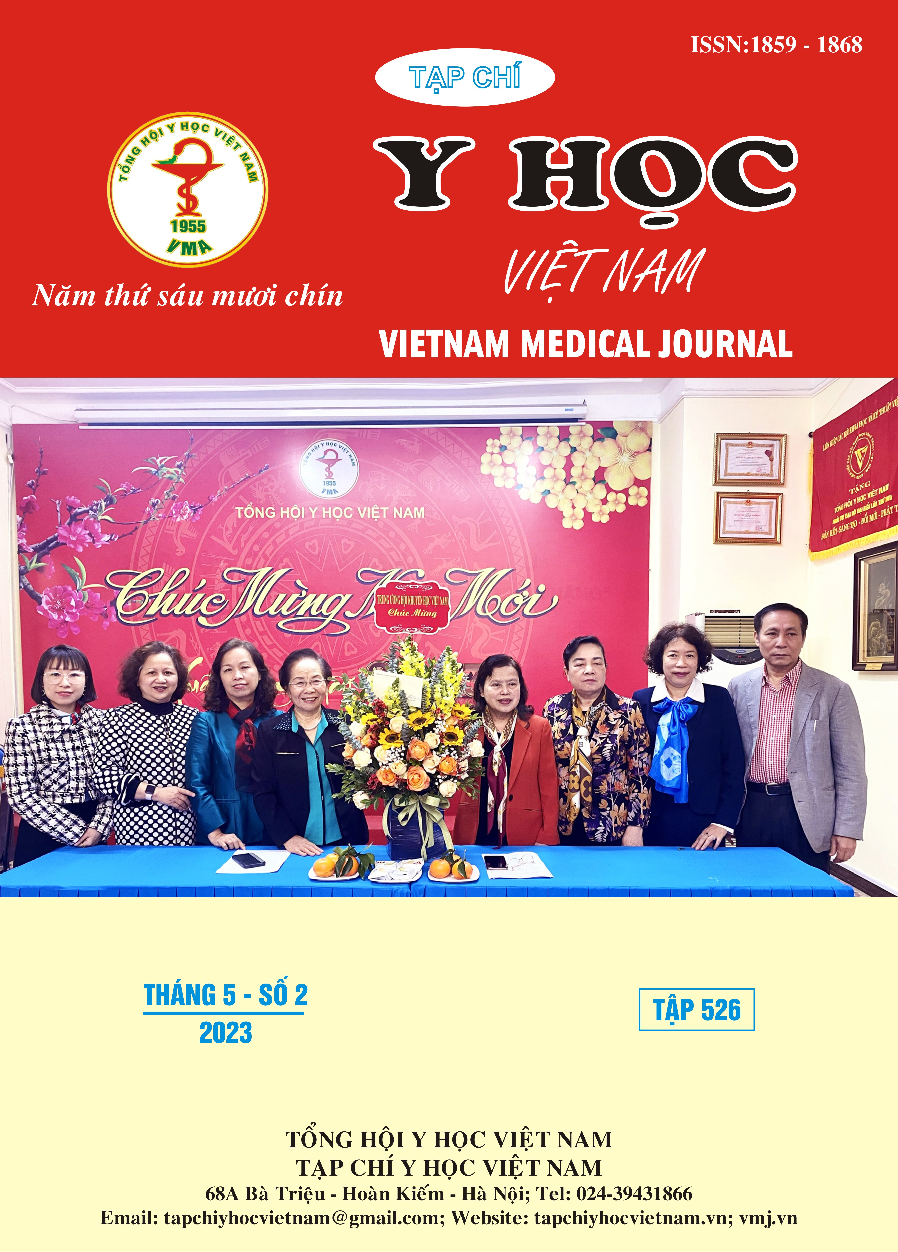CLINICAL AND SUBCLINICAL CHHARACTERISTICS AND TREATMENT RESULTS FOR SIMPLE FEBRILE SEIZURES AT HAI PHONG CHILDREN'S HOSPITAL IN 2021 - 2022
Main Article Content
Abstract
Objectives: To describe some epidemiological clinical features of simple febrile convulsions (SFC) at Hai Phong Children's Hospital from November 2021 to April 2022 and comment on the results of treatment for these cases. Subjects and methods: a retrospective study describing a series of cases by means of convenience sampling including all eligible patients for the study. Results: SFC mainly occurred in children from 6 to <36 months old, more frequent in boys than girls (2/1). The number of children having first SFC accounted for 74.7%. The most common causative febrile illness were upper and lower respiratory tract infections. The duration of seizures was mostly <5 minutes. The most common symptoms of SFC were eye rolling and cyanosis. Most children were awake and cried loudly after the seizure. The most commonly measured body temperature during a SFC was at 39 - 41oC. The majority of cases of SFC had an increase in the number of white blood cells in the peripheral blood, especially an increase in the percentage of neutrophils. Only in a few cases that we could determine the viral etiology of the pathology related to the child's fever and detected changes on the ionogram. There were no cases of aggravation or recurrence of seizures during inpatient treatment. Conclusion: SFC is a common disease in children under 36 months of age and can be prevented through good management of children with fever, especially in the group of children with acute respiratory infections.
Article Details
Keywords
children, simple febrile convulsions, fever
References
2. Kanemura H, Sano F, Mizorogi S, Tando T, Sugita K, Aihara M. Parental thoughts and actions regarding their child's first febrile seizure. Pediatrics international: official journal of the Japan Pediatric Society. Jun 2013;55(3):315-9. doi:10.1111/ped.12058
3. Leung AK, Hon KL, Leung TN. Febrile seizures: an overview. Drugs in context. 2018;7:212536. doi:10.7573/dic.212536
4. Nguyễn Thị Thu. Đặc điểm dịch tễ học lâm sàng của co giật do sốt và hình ảnh điện não đồ của co giật do sốt tái phát ở trẻ em. Luận văn Thạc sỹ Y học. Đại học Y Hà Nội; 2013.
5. Subcommittee on Febrile Seizures, Pediatrics AAo. Neurodiagnostic evaluation of the child with a simple febrile seizure. Pediatrics. Feb 2011;127(2):389-94. doi:10.1542/peds.2010-3318
6. Nguyễn Văn Bắc, Nguyễn Thị Xuân Hương, Nguyễn Bích Hoàng, et al. Đặc điểm và một số yếu tố nguy cơ co giật do sốt ở trẻ em tại bệnh viện Trung ương Thái Nguyên. Tạp chí Y học Việt Nam. 04/26 2022;512(2)doi: 10.51298 /vmj.v512i2.2292
7. Nguyễn Ngọc Sáng, Đoàn Thị Linh, Hoàng Đức Hạ, Ngọc PT. Đặc điểm dịch tễ học lâm sàng, cận lâm sàng và một số nguyên nhân co giật do sốt đơn thuần tại bệnh viện trẻ em Hải Phòng Tạp chí Y học Việt Nam. 2020;488(2):174-177
8. Ataei‐Nakhaei A, Rouhani ZS, Bakhtiari E. Magnesium deficiency and febrile seizure: A systematic review and meta‐analysis. Neurology and Clinical Neuroscience. 05/01 2020; 8doi:10.1111/ncn3.12410


